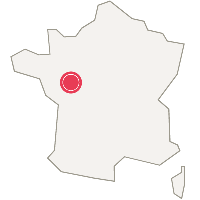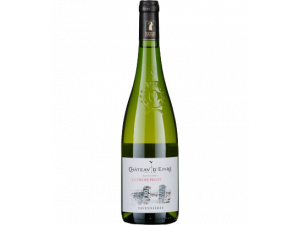You have no items in your shopping cart.
Vallée de la Loire
Château d'Epiré
(91 customer reviews)
Château d'Épiré is a winery located in the commune of Savennières, in the Maine et Loire department of the Pays de la Loire region. It produces Anjou wines. Find out more
 Recommended by
Recommended byGilbert & Gaillard - Le Guide Hachette - Cellar Tracker
24
See more filter
Vallée de la Loire :
Best rated red wines
Best rated red wines
Vallée de la Loire :
Best rated white wines
Best rated white wines
-

Estimated delivery between 21 and May 23,
- -27%
-

Garantie anti-casse :
Prise en charge totale
The winemaker
The history of Château d'Épiré
Château d'Épiré is a family estate now located in the commune of Savennières, but previously belonged to the commune of Épiré, which merged with its neighbor.
The estate has belonged to the same family, the Bizard family, since the 17th century, who have passed on their winemaking tradition and expertise from generation to generation. However, this terroir had already been occupied by vines for a very long time, as the Cistercian monks who founded the Épiré church in the 11th century were already cultivating vines.
From the 17th century onwards, Château d'Épiré was passed down from mother to daughter for several generations. Its last heir before the Bizard family bought it out was Élisabeth Poudret de Sevret. She was the wife of Emmanuel Pons de Las Cases, son of Napoleon's famous memorialist and page to the Emperor during his exile on St. Helena.
Just a few weeks after her marriage, her young husband died of pneumonia in 1882. With no heirs, Elisabeth de Las Cases bequeathed her estate to her friend Théophile Bizard. He settled at the château and decided to perpetuate the Château d'Épiré winemaking tradition.
His son, René Bizard, inherited the estate in 1905. He was able to get his hands on the old church of Épiré - which dated back to the 12th century and had not been maintained - and transform it into a winery. Between 1959 and 1984, the estate was managed by René's son Armand. He restructured the vineyard to improve production and began exporting his wine to the United States.
Between 1984 and 2018, Armand's children, Luc and his sister, took over the estate. They further extended the vineyard and modernized the winery. They also continued to export their production around the world. Since 2018, Château d'Épiré has been run by Paul Bizard, the fifth generation of the family.
The Château d'Épiré vineyard
The Château d'Épiré vineyard occupies a rocky spur on the north bank of the Loire, and benefits from the gentle Angevin climate attributed to Europe's largest wild river. Château d'Épiré wines benefit from the schist contained in the soil that gives Savennières wines their distinctive character.
The Savennières appellation tolerates only one grape variety, Chenin, which has been grown on the banks of the Loire since the 9th century. It has the advantage of being used to make dry, sparkling or sweet wines.
Chenin is considered a chameleon grape variety. It immerses itself in the terroir in which it grows, and then expresses the specific characteristics of each soil. When grown on the shallow schist soils of Savennières, it gives the wine from which it is made freshness, linked to a notable minerality.
Château d'Épiré is harvested as naturally as possible, by hand. To ensure that the fruit is ripe, it's not unusual for the pickers to have to make two or three passes through each row.
The wines of Château d'Épiré
Our Savennières
- Le Parc- Cuvée Spéciale
- La Croix Picot
- Comtesse de Las Cases
Anjou Rouge
- Le Clos de la Cerisaie
Registered since 06/02/2018

Chai du Château d’Epiré ,
49170 SAVENNIERES
49170 SAVENNIERES

3 wines available
between 17.9 € and 32 €
between 17.9 € and 32 €

73 wine's scans
on Twil application
on Twil application

Best rated wines on Twil :
You might like Voir tous les vins de la région
- -25%
- -29%
























 TWIL - Achat de Vin
TWIL - Achat de Vin


